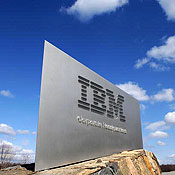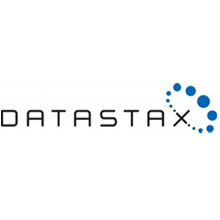
This Week’s Big Data Big Five
Already we’re rounding the bend to mid-August and what we expect will be an intense news cycle that will hit even harder around September. To kick off the end of summer news rush this week we share some items from Supermicro, which just took the covers off some heavy-duty big data iron; platform optimizations from ParAccel, a brief story about a Japanese-born startup focused on multicore and more.
Without further delay, let’s kick off the top five with news from the supercomputing realm–
Supermicro Unleashes FatTwin on Big Data
Supermicro has ramped up production of its FatTwin server platform, the latest evolution of their Twin architecture featuring high-performance, dual-processor, 8/4 hot-pluggable node configurations they say are ideal for large scale deployments.

FatTwin focuses on performance, efficiency and versatility for scientific, research, engineering, and enterprise organizations requiring high-performance, scalable computing and storage solutions for mission-critical applications. The platform is optimized for process intensive database driven applications including Big Data and Hadoop analytics, gas and oil exploration, HPC, computational finance, search engines, design and modeling, simulation and many other applications.
“Interest in our FatTwin platform’s advanced technology and operational savings has grown since our initial launch and we are excited to deliver higher compute capacity and performance along with maximum energy and cooling efficiency in volume to customers worldwide,” said Charles Liang, President and CEO of Supermicro. “For high capacity needs, the 4U, 4-node FatTwin supports an impressive 8 hot-swap 3.5″ HDDs per node. For high performance applications, FatTwin can be configured to support up to 135W CPUs. Our unique FatTwin architecture provides customers the lowest TCO while boosting performance and new models are just around the corner, optimized for HPC with high-density GPU support and Hadoop, big data analytics applications.”
Next — New Platform Addresses Big Data Dev Woes >
New Platform Addresses Big Data Dev Woes
Multicore software firm Fixstars says that although parallel processing was viewed as the solution for high-volume computational applications, the volume of data and demand for real-time output are now posing new problems with complexity of code, portability and energy consumption.
 The company, with roots in Japan and headquarters in Sunnyvale says that can address this through the the North American launch of M-Cubed, a new software development platform they say reduces development time, and increases processing performance for multi-core, multi-node, multi-architecture environments.
The company, with roots in Japan and headquarters in Sunnyvale says that can address this through the the North American launch of M-Cubed, a new software development platform they say reduces development time, and increases processing performance for multi-core, multi-node, multi-architecture environments.
Nagayoshi Kobayashi, ISV Enabling Manager, Intel Japan on the release of M-Cubed, “The latest Intel processor has the capability to manage 20 threads in one chip. The M-Cubed platform is a unique approach to improve the processing speed of software working on such many core devices. We are looking forward to future development of M-Cubed.”
While parallel processing is the answer to the need for big data applications, parallel programming is significantly more difficult than sequential programming, and many applications fall short of taking full advantage of their hardware environments. Satoshi Miki, Chief Executive Office of Fixstars, said, “With every release of new hardware to the market, the ability for software developers to quickly respond to and take advantage of hardware innovations has become a key competitive advantage.”
Since 2002, Fixstars has helped clients dramatically improve computing performance with software development and optimization of various hardware environments, such as NVIDIA / ATI GPU, ARM SoC, and Intel / AMD x86. Fixstars has recognized the need for a platform to help developers focus on building software applications without needing to code for every specific hardware type. The result is M-Cubed, offering a highly efficient development process producing highly optimized and portable software applications.
Next — Oil and Gas Venture Looks to IBM Analytics >
Oil and Gas Venture Looks to IBM Analytics
This week IBM announced that HMEL, a joint venture between Hindustan Petroleum Corporation Limited (HPCL) and Mittal Energy Investment Pte Ltd, Singapore, has adopted a new IBM analytics-based solution to transform how the company manages its financial and operations data to boost business performance.
 HMEL has built the 9 MMTPA (million metric tonne per annum) Guru Gobind Singh Refinery in Bathinda, Punjab. The first oil and gas project to be set up in the state of Punjab, the refinery produces petroleum products complying with Euro IV emission norms, with a capability of processing 180,000 barrels of crude oil per day. HMEL had earlier engaged IBM as its strategic partner for the design and implementation of manufacturing execution systems (MES) including the selection of the select processes and applications, as well as managing the mechanics of the program.
HMEL has built the 9 MMTPA (million metric tonne per annum) Guru Gobind Singh Refinery in Bathinda, Punjab. The first oil and gas project to be set up in the state of Punjab, the refinery produces petroleum products complying with Euro IV emission norms, with a capability of processing 180,000 barrels of crude oil per day. HMEL had earlier engaged IBM as its strategic partner for the design and implementation of manufacturing execution systems (MES) including the selection of the select processes and applications, as well as managing the mechanics of the program.
The new IBM solution integrates information from the various components of the MES, enterprise resource planning (ERP), and control systems within the refinery and delivers a consolidated, single view of the data. The new technology will enable HMEL to analyze key corporate business processes including, planned versus actual investments, production, key performance indicators, among others. The system will generate near real-time information for HMEL business executives to use to make more intelligent decisions around optimizing productivity and margins.
“As a green-field project, we wanted to leverage the best of technology to ensure world-class operations and efficiency. We needed a solution that would provide us with a centralized view of all our assets for operational management purposes. IBM’s framework, built for our industry, addressed our requirement effectively,” commented, Moiz Tankiwala, Chief Operating Officer, HMEL.
IBM has been working alongside HMEL as part of Project Prism, the umbrella program to implement strategic applications for HMEL, to support the ERP system, manage master data (MDM), build key performance indicator (KPI) dashboards, and create an integration business application environment. The Cognos Business Intelligence solution helps HMEL in building an enterprise-class Performance Management platform closely aligned with their existing technical architecture.
“This project is a testament to our ongoing collaboration to build smarter solutions across industries in the region. We are proud to be associated with HMEL in helping them build a truly world-class refinery,” said Vanitha Narayanan, Managing Partner, Global Business Services, IBM India/South Asia. “Amidst complex processes, like in a refinery, use of analytics can transform financial processes and improve operational efficiencies thereby establishing a new standard of excellence in business performance.”
IBM says their analytics solution not only delivers the ability to access data consistently, but also equips the organization with power to interpret, transform and derive process operation actions from the information. It provides an industry standards based information model and associated integration techniques, enabling HMEL to turn data into information that can be accessed and delivered through Web services.
Next — ParAccel Puts Emphasis on Optimization with 4.0 >
ParAccel Puts Emphasis on Optimization with 4.0
Analytics platform company, ParAccel, has announced the general availability of ParAccel 4.0, which they say focuses on high performance and interactive big data analytics with increasing speed and reliability.
 The company says the platform is based on the realization that organizations are looking for ways to manage big data while making the most of their current technology investments. As a result, many have started to implement logical data warehouses or hybrid data ecosystems — architectures that allow data and workloads to migrate to the best suited platform. ParAccel says its Analytic Platform, with its on-demand integration modules released last month, could help organizations implement this type of interactive environment while delivering high-performance analytics at scale.
The company says the platform is based on the realization that organizations are looking for ways to manage big data while making the most of their current technology investments. As a result, many have started to implement logical data warehouses or hybrid data ecosystems — architectures that allow data and workloads to migrate to the best suited platform. ParAccel says its Analytic Platform, with its on-demand integration modules released last month, could help organizations implement this type of interactive environment while delivering high-performance analytics at scale.
ParAccel says the 4.0 release enables companies to execute analytics in dynamic and interactive environments with improved stability and performance increases of 15 percent. They also point to other new features, including optimizations for advanced queries, interconnects and I/O in addition to new hash join algorithms they say optimize the utilization of memory and dynamically change the execution strategy at run-time resulting in improved performance.
ParAccel says they have continued to add more SQL functionality including the support of more efficient ways to define tables that can be reused during the execution of a query. The company claims these combined features allow larger numbers of users to execute increasing numbers of queries in a highly interactive analytic environment.
Next — A Big Year for Cassandra >
A Big Year for Cassandra
Apache Cassandra, the massively scalable NoSQL database that handles real-time big data workloads across multiple data centers, is scaling in popularity as a growing number of enterprises rely on its powerful capabilities, says DataStax.
 The momentum of the Cassandra community is evident as more than 800 IT professionals from around the world convened this week at the 2012 Cassandra Summit hosted by DataStax, the commercial company behind Apache Cassandra. According to DataStax, the number of enterprise users that rely on Cassandra to manage data supporting critical business applications has more than doubled in the last 12 months.
The momentum of the Cassandra community is evident as more than 800 IT professionals from around the world convened this week at the 2012 Cassandra Summit hosted by DataStax, the commercial company behind Apache Cassandra. According to DataStax, the number of enterprise users that rely on Cassandra to manage data supporting critical business applications has more than doubled in the last 12 months.
Initially developed by Facebook in 2008, Cassandra became a top-level project at the Apache Incubator in 2010. Apache Cassandra project chairman Jonathan Ellis then went on to co-found DataStax, which today employs most of the project’s committers, the individuals who wrote one or more of the codebases hosted by the Apache Software Foundation.
The vast majority of Cassandra code was written by people now at DataStax. DataStax says companies choose Cassandra for its speed, scalability, multi-datacenter capabilities, continuous availability and performance, and those who rely on it are ardent supporters.






























